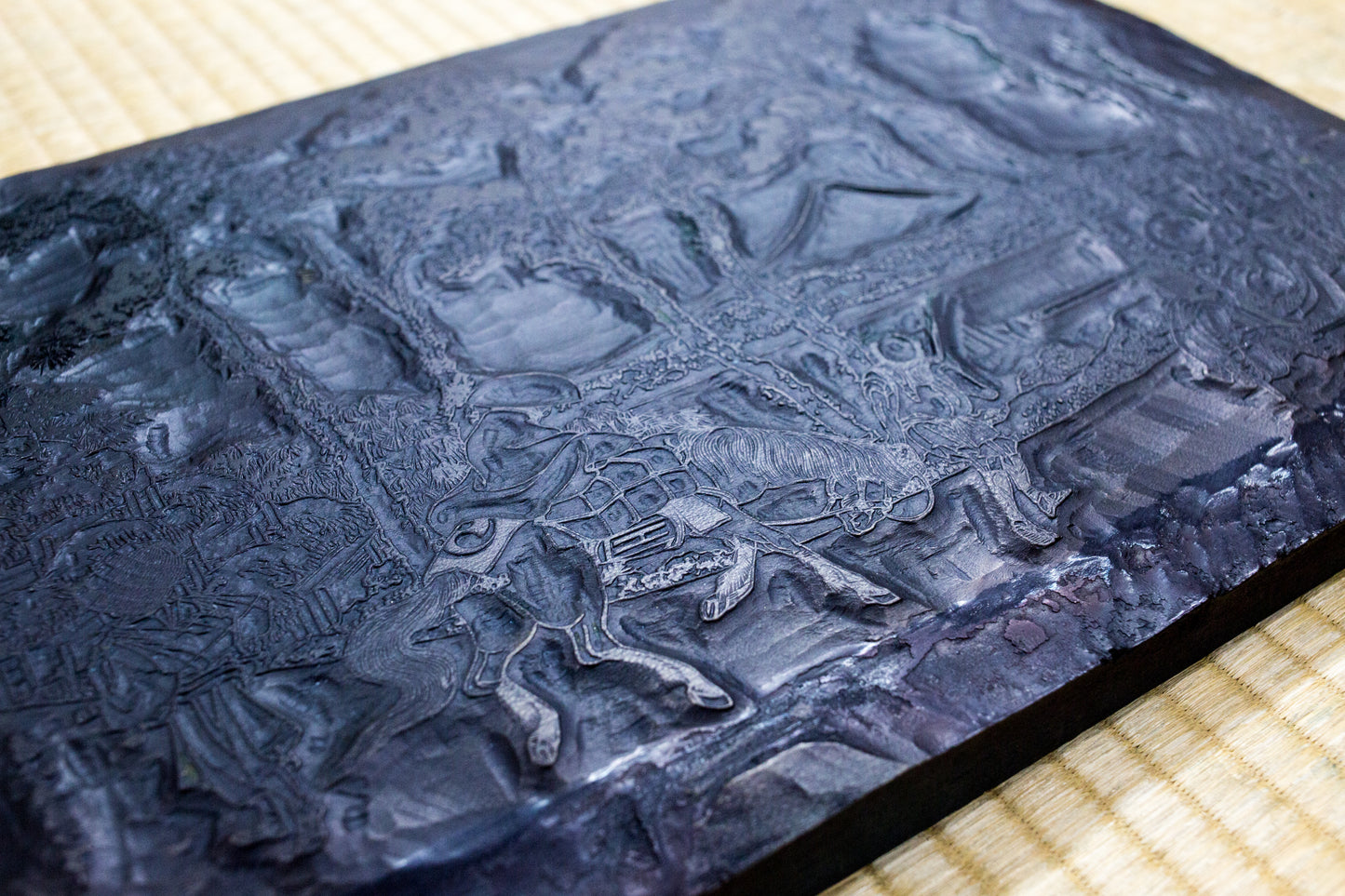Mother and Child Peeling a Peach
Mother and Child Peeling a Peach
Couldn't load pickup availability
Around in 1798 (Kansei 10), Utamaro started drawing more pictures about not only entertainment women or women in a tea stall, but also people seen in a regular family. The mother’s posture, leaning forward and kneeing up, seems unstable posture for us. However, Uatamaro finished the structure stable by adding the child; leaning over the mother and moving the legs rhythmically. This is what we call his dexterity. Some of the items, glassware, paper fan, sleeve rolled up to the shoulder, and exposed breast area, remind us mid-summer. Round face mother and a child who is looking at her mother’s hand still contrast each other and that make us smiling.
Utamaro Kitagawa(1753-1806)

1753 (Horeki 3) – 1806 (Bunka 3)
After Utamaro came under the tutelage of Sekien Toriyama, a painter of the Kano School, Juzaburo Tsutaya found him. Utamaro started drawing color woodblock prints and illustration books under his patronage. Around 1791, Utamaro adopted the style of okubi-e (portraits showing only the head or head and upper torso) to his drawings of beautiful women, and used popular teahouse women as his models. For these, he was recognized as the leading beauty painter of ukiyo-e. His beauty portraits influenced the era; people who saw Utamaro’s portraits came to the women’s house to catch a glimpse of them. Later, under the Kansei Reform, a series of conservative governmental measures limited many expressions. However, Utamaro did not give up, and played an active role in the golden age of ukiyo-e. In 1804, Utamaro was accused of violation of the law for drawing Hideyoshi Toyotomi, whom it was forbidden to portray. Utamaro died two years after this incident.
Utamaro Masterpieces
Utamaro Kitagawa(1753-1806)
These are the Utamaro Masterpieces, including the Six Famous Beauties. Utamaro left a variety of works; however, people mostly recognize his title as a painter of women, especially beautiful women. Despite the number of oppressions and limitations he faced, he challenged these circumstances and kept drawing pictures as he believed. He faced women straight-on and depicted their real lives, bodies and souls. He undertook keen observations. Two thirds of his works were depicted women in the Yoshiwara district and courtesans. However, he also developed other themes, such as the affection of mother and child in old towns, and well-known teahouse girls. These thirty masterpieces stand as the culmination of Utamaro’s ukiyo-e illustrations of beautiful women.
Share



















